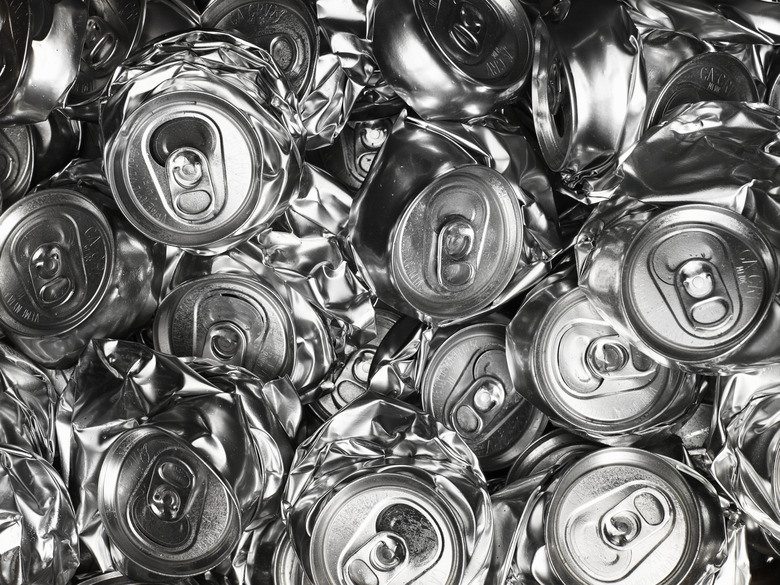The Cost To Recycle Aluminum Vs. Plastic
Recycling is converting waste products into new products. Recycling aluminum and plastics takes them out of the conventional waste stream, saving both space in landfills and the materials needed to make products from virgin materials. At the recycling plant, aluminum is shredded and melted, impurities are skimmed off and it is ready to go into new aluminum products. Plastics must be sorted by type, processed into clean flakes or pellets and then they are ready to go into products such as polyester or plastic lumber.
Energy Costs
Energy Costs
The energy to recycle materials into new products is most often expressed as the ratio between the energy cost to recycle the product and the energy to make products from virgin materials. Recycling aluminum uses 95 percent less energy than extracting aluminum from bauxite ore. Plastics are not as homogenous a group, and estimates for the amount of energy saved by recycling plastics ranges from 76 to 90 percent. That represents an absolute energy savings of 14,000 kilowatt hours per ton of aluminum and 14,000 to 22,000 kilowatt hours per ton of plastic with current technologies.
Transportation Costs
Transportation Costs
From curbside pickup to transporting materials to recycling facilities, the fuel used to transport recyclables is a significant cost. The absolute cost depends on how far and by what method, for example semi trucks or rail cars, the materials are transported and the cost of fuel. Aluminum is approximately twice as dense as the PET plastic that makes up water bottles, so more compressed aluminum should be able to fit in a transport vehicle than compressed plastics, meaning heavier but fewer loads.
Sorting and Handling Costs
Sorting and Handling Costs
Another significant cost is the time and attention it takes to properly sort recycled materials at the collection facility. Costs can vary depending on whether all of the recyclables are mixed together or separated by type and the frequency or absence of curbside collection. Aluminum cans require minimum sorting, but the various plastics need to be separated by their resin identification code, the little number on the bottom of bottles and containers. Different plastics have different recycling processes and end products that necessitate this labor-intensive step.
Value as Commodities
Value as Commodities
Both recycled aluminum and recycled plastics are commodities, they have value in the marketplace that can help recoup the cost of recycling. The price of commodities goes up and down depending on supply, demand and the political climate. At the time of publication, the index prices for recycled aluminum were 140 percent index prices for recycled plastics. Current commodities prices for recycled materials are available for purchase through several distributors.
Cite This Article
MLA
Becker, Andrea. "The Cost To Recycle Aluminum Vs. Plastic" sciencing.com, https://www.sciencing.com/cost-recycle-aluminum-vs-plastic-24066/. 24 April 2017.
APA
Becker, Andrea. (2017, April 24). The Cost To Recycle Aluminum Vs. Plastic. sciencing.com. Retrieved from https://www.sciencing.com/cost-recycle-aluminum-vs-plastic-24066/
Chicago
Becker, Andrea. The Cost To Recycle Aluminum Vs. Plastic last modified March 24, 2022. https://www.sciencing.com/cost-recycle-aluminum-vs-plastic-24066/
